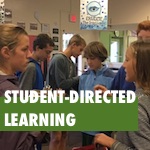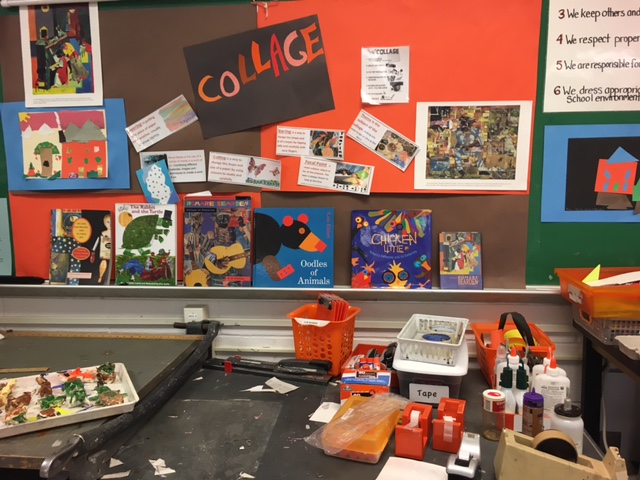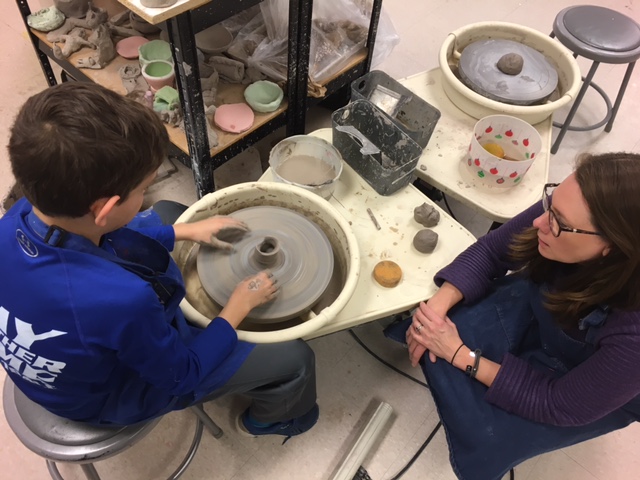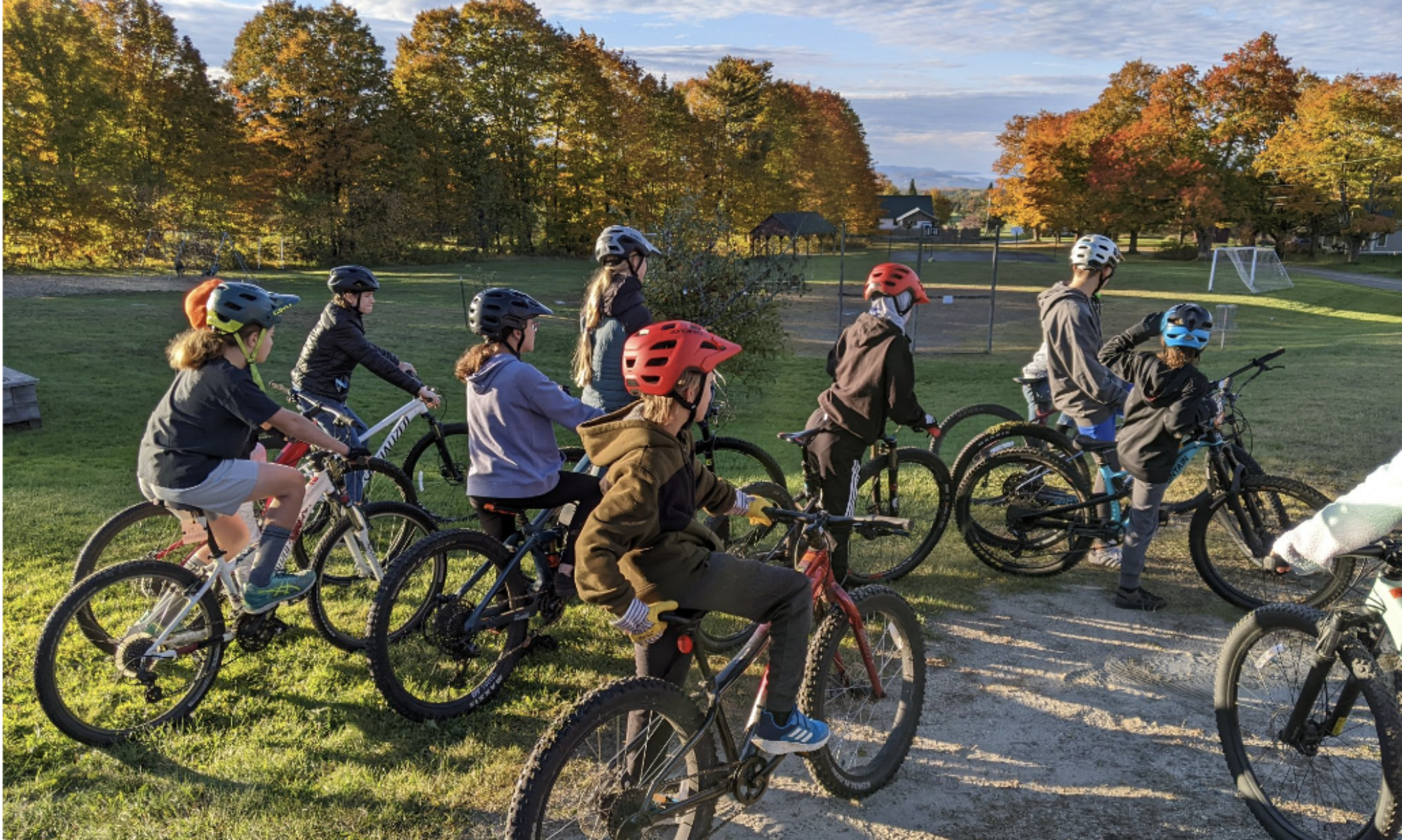Structures to support student artists
 Art is “the expression or application of human creative skill and imagination”. To teach children that expression or application sounds like a lofty endeavor. But that is exactly what art teachers do in our schools every day.
Art is “the expression or application of human creative skill and imagination”. To teach children that expression or application sounds like a lofty endeavor. But that is exactly what art teachers do in our schools every day.
If art is the expression of creativity and imagination, then we need new models. Because art is about voice and originality. There is no right and wrong way to express your vision and creation.
Why a new model for teaching art?
When I was in art class, the creativity and imagination was strongly guided and heavily directed. The art teacher would show the class, for example, a picture of Vincent van Gogh’s Starry Night, and then students would go to their seats with supplies and try their best to copy it.
That was the model: the teacher would show us a shining example, then we mimicked it to the best of our ability.
And I remember being worried that I wasn’t doing it right.
I worried that my creation was not as good as the teacher’s. That mine looked different. Yet knowing what I know now, I want to give that little girl a hug. Art is often about being original. Looking different. And art teachers should be giving students the opportunity to consider their own products and explore different methods – like a true workshop.

When you walk into the art classroom at Rutland Town School, in Rutland VT, you feel a sense of calm and productivity. Students work alone, in pairs or in groups, throwing clay, drawing, painting, working in papier mâche. They laugh and talk and whisper, moving around the room with purpose, focused and productive.
They’re the very picture of busy, working artists.
The Inquiry Stations Model
McReynolds uses a stations model to allow for students to explore a variety of mediums and art. Her process is based on the principles and practices of Teaching for Artistic Behavior (TAB), a choice-based art education approach.
The idea behind TAB is simple: students are artists and the classroom is their studio.
To that end, Mrs. McReynolds introduces one station at a time to her middle schoolers at the start of the year. Students might try drawing first, for example. Then the next week, they engage with the collage station. Each week or so, the students learn new mediums and are introduced to open stations for art inquiry.
Over time, students make their own choices from a variety of artistic mediums. At the same time, McReynolds gradually releases responsibility, giving students their independence in creating.

What makes it work?
Google Classroom gives structure to proficiency-based assessment
McReynolds has designed many structures to make sure this self-directed model works. She relies heavily on Google Classroom for students to keep her in the loop about their work. After some thinking about their choices, students go to her Google Classroom page and complete a “Project Plan”. The students inform McReynolds of their design and choices by filling out the plan. After students finish the project, they submit an “Artist’s Statement”.
Allowing students so much choice in their projects requires some rigorous management tools to keep up and to provide students with timely feedback. This Google Classroom-based system doesn’t just help McReynolds assess student proficiency, it also provides students with timely, detailed, ubiquitous guidelines around those proficiencies.

Shifts in teaching & learning
Several shifts in the teaching and learning partnership have occurred in this success story. One important change is in McReynold’s role as a teacher. She isn’t the lecturer or the master; rather she is a facilitator and guide of these various artistic endeavors. Her language towards her students is similar to that of a coach: asking questions and pointing to physical practices that need refinement.

Self-directed art is less controlled
Sure there’s tight organization and management at work here, but when everyone’s involved in different expressions of creativity, the classroom is lively. It requires the teacher to scaffold the stations and release the learning.
Reynolds reflects on the benefits of a student directed art class thusly:
“I have seen students be more personally engaged in their work. It is a busy classroom; there is a greater level of excitement and commitment to the process of creating their projects… if it’s a teacher directed project, their heart (isn’t) in it.”
Student-centered learning supports engagement
The most impressive outcome that I observed is the students’ ownership of work. Students appeared truly interested and invested in their art projects. TAB says about their own process, “Art that is created from the meaningful context of young artists’ lives enhances relevancy and authenticity. Students who maintain control over their work are invested and have incentives to take risks. Resulting artwork is often powerful and profound”.
How can this model work in other content classrooms?
Can you apply its principles to other learning environments? A choice-based science approach? A stations model in Phys Ed?
We’d love to hear your ideas.


This was a useful post and I think it is rather easy to see from the other comments as well that this post is well written and useful. I bookmarked this blog a while ago because of the useful content and I am never being disappointed. Keep up the good work.
So once again this is all geared for middle and high school. Awesome and great for that level. How about at the elementary level? This is being pushed at us but doesn’t have any suggestions or ideas on how to do this at the lower level. I am an itinerant art teacher and move schools every year. I don’t have computers for all students, ect. I have them 45 minutes once a week at best. This year I only have 450 students, but I have had as many as 675.
Got any suggestions on how to make this model work for me or others like me?
You make a really good point. Most of our resources are for middle and high-school level, it’s true; that’s our area of specialty. But you’re absolutely right that educators at the elementary level, such as yourself, need support with these topics.
450 students is an incredible amount of students to keep track of, with or without computers. I can’t imagine how you make that work. Are there any specific resources you’ve found useful for managing that number outside of computer use? And when you say “this is being pushed at us”, can you be more specific about the “this”? I’ll put some feelers out there for other elementary art teachers we might know in our network and see if we can pull some connections together. I absolutely agree: it sounds like you’re in an incredibly challenging situation, and for students to arrive at the middle level with the skills to self-manage and motivate, elementary level educators need support too.
Hello Again-
As I progress in this process I find I might be able to check out a set of computers at the school. It seems more and more teachers are using google classrooms as a platform. So i might be able to tap into the system they already have. So students already have accounts and have some practice using them.
So my next questions would relate to the project plan and expectations. Also what about
assessment at the end. Do they do a section of personal assessment in the artist statement?